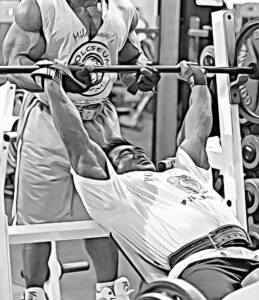
Strength Sensei 101
Eccentric Loading: Part I
More insights into the pioneering training methods of Charles R. Poliquin
In the early 90s, Charles R. Poliquin was asked what he thought the most significant advancement would be in strength coaching in the coming years. His reply: “Eccentric Training!”
The Strength Sensei defined eccentric strength as “the amount of force that is produced when a muscle lengthens vs. concentric strength which is the amount of force produced when a muscle shortens.” He also cited research that said an eccentric contraction can produce as much as 1.3 times more force than a concentric contraction. [Griffin, J. W. Differences in elbow flexion torque measured concentrically, eccentrically, and isometrically. Physical Therapy and Rehabilitation Journal. 67(8):1205-1208. 1 August 1987. Although this study involved 30 women and no men, subsequent research and empirical evidence supports the SS’s opinion that any athlete, male or female, can produce more force with eccentric contractions.]
What is the value of focusing on eccentric contractions? Here are five reasons the Strength Sensei gave (along with several of his references to support his opinion):
- It enables you to develop the highest levels of muscular tension. Higher levels of muscular tension favor the development of hypertrophy and strength. [Hakkinen K. and Komi, P.V. Alterations of mechanical characteristics of human skeletal muscle during strength training. European Journal of Applied Physiology. 50:161-172. 1983]
- Combining eccentric training with concentric training increases maximal strength faster than concentric training alone. [Collander E.B. and Tesch, P.A. Effects of eccentric and concentric muscle actions in resistance training. Acta Physiologica Scandinavica. 140:31-39. 1990]
 Workouts that emphasize eccentric training can accelerate strength gains. (Miloš Šarčev photo)
Workouts that emphasize eccentric training can accelerate strength gains. (Miloš Šarčev photo)
- It is valuable for breaking through strength gain plateaus. The Strength Sensei said this is partially because “there is more mechanical load per motor unit in an eccentric contraction.”
- It is specific to many sports movements. Among the examples the Strength Sensei gave was the landing in gymnastics and helping to decelerate the arms in throwing motions, the latter being especially valuable in injury prevention. [Duda M. Prevention and treatment of throwing arm injuries. Physical and Sportsmedicine. 13(6):181-186. 1985]
- It enhances the performance of many strength exercises. Being able to lower weights more slowly can improve performance in exercises such as squats and bench presses. [Madsen N. and McLaughlin T. Kinematic factors influencing performance and injury risk in the bench press exercise. Medicine and Science in Sports and Exercise. 16:429-437. 1984]
From this research background, the Strength Sensei developed many specific guidelines about how to incorporate eccentric work into strength training workouts, particularly for athletes. These guidelines will be explored in Part II. (TSS)
